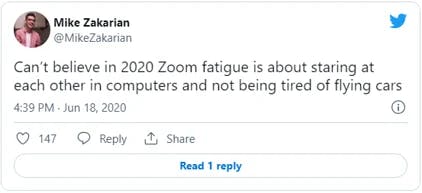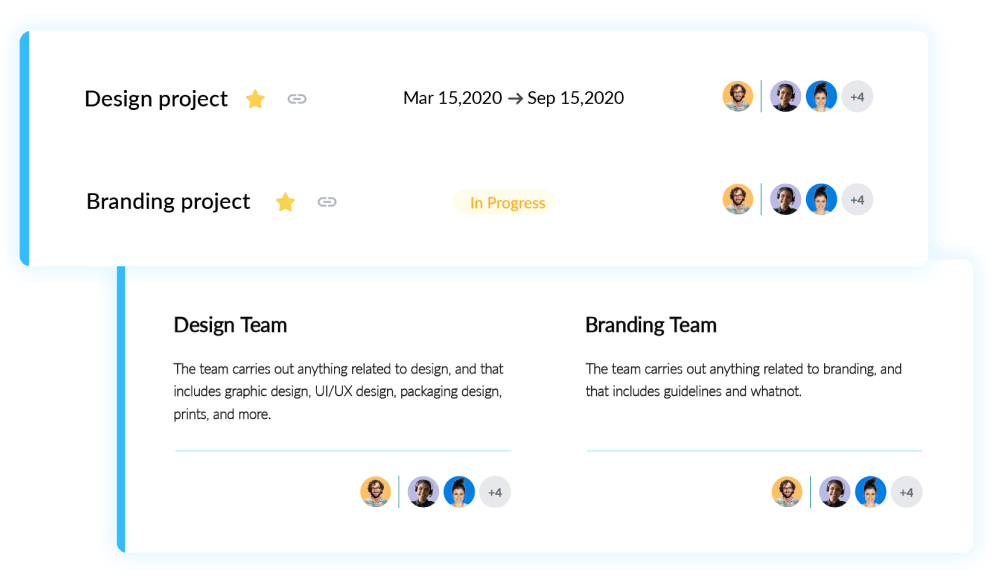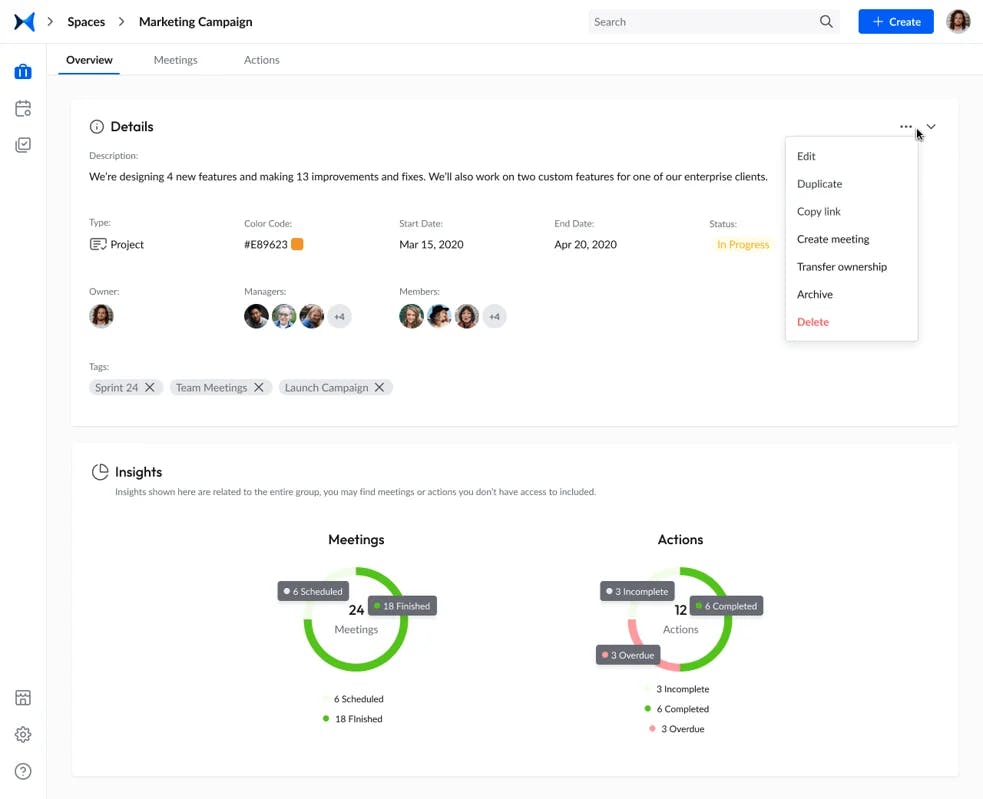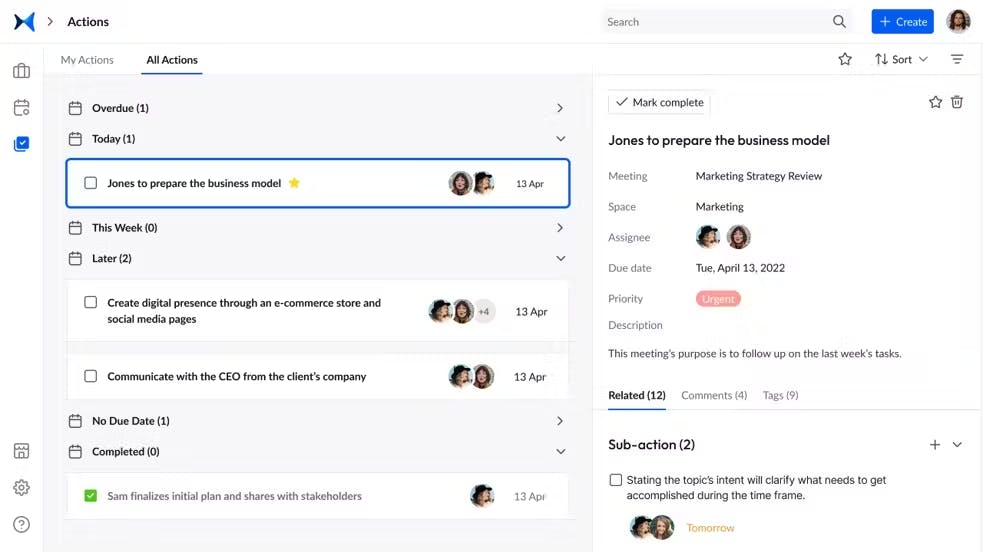May 19, 2022 · 8 min read
Solutions that Make Sense When Minimizing Zoom Fatigue

Mary Nour

No, you're not imagining it. Video calls are draining. You feel physically and mentally tired and your eyes are irritated and painful. You may even tend to isolate away from people.
It's called Zoom fatigue. This article covers the definition of Zoom fatigue, the types of symptoms you may experience, the four major causes of virtual fatigue, and solutions to minimize Zoom fatigue, including an incredibly efficient solution that may have never crossed your mind.
Is Zoom fatigue a thing?
Zoom fatigue is real. According to Wikipedia, Zoom fatigue is tiredness, worry, or burnout associated with the overuse of virtual platforms of communication, particularly videoconferencing. You may wonder if it's related to Zoom usage only. It's just because the platform is so popular that when the expression first came out, it was associated with Zoom.
However, you can experience Zoom fatigue while using other videoconferencing platforms, like Google Meet, Skype, and Teams. So, what does it feel like exactly?
What are Zoom fatigue symptoms?
In its article "22 tweets for people who are sick and tired of Zoom calls," Mashable displays the different reactions of people towards Zoom fatigue.
Between calling "surviving Zoom calls" a skill that should be added to CVs and expressing the burden of having to look at oneself and meeting attendees in a video call for a long time, the tweets show to what extent people are exhausted.

Source: Mashable
One of the classic Zoom fatigue signs is finding yourself agitated, drained, and exhausted after video calls. You'll tend to postpone or cancel meetings. Get easily frustrated from Internet or technical issues. You'll notice a reduced performance and inability to handle work responsibilities. You can also experience new annoying eye symptoms, like irritation or pressure on the eyes. You'd find that migraine is your new friend.
And since Zoom fatigue is one type of burnout and mental fatigue, it shares the same key signs of burnout. The most common are difficulty concentrating, social detachment, insomnia, muscle tension, and irritability with work colleagues.
A research paper by Stanford University on Zoom exhaustion categorized fatigue into five categories: general, visual, social, motivational, and emotional.
General fatigue
If you feel drained and physically and mentally tired, that's what's called general fatigue.
Visual fatigue
Visual fatigue is experiencing irritation and pain around the eyes. It also includes blurred vision.
Social fatigue
Social fatigue is tending to avoid socializing with people. You avoid social events and tend to isolate away from everyone. You feel the absolute need of having time to yourself.
Motivational fatigue
If you experience motivational fatigue, you'll often feel too tired to do your usual tasks. You'll lack motivation and dread to-do lists and committing to doing anything.
Emotional fatigue
If, after video calls, you feel moody and emotionally drained, then you're experiencing emotional fatigue.
The paper concluded two things: (1) the larger the number of Zoom meetings and the longer the meetings, the higher the levels of fatigue, and (2) fatigue contributed to negative attitudes towards Zoom meetings. Now, the question is what is causing all these Zoom fatigue symptoms?
What are the four major causes for Zoom fatigue?
Professor Jeremy Bailenson, founding director of the Stanford Virtual Human Interaction Lab (VHIL) and one of the authors of the paper "Zoom Exhaustion & Fatigue Scale," published an article that specifically tackles the major reasons behind Zoom fatigue. In his article "Nonverbal Overload: A Theoretical Argument for the Causes of Zoom Fatigue," he specified four major causes for Zoom fatigue.
1. Virtual faces coerce you into maintaining a constant eye gaze
Did you notice that in elevators you compensate the strangers' invasion of your interpersonal space by minimizing eye contact? You minimize one nonverbal cue to compensate for an increase in another.
Bailenson mentions that the opposite happens in Zoom video calls, where you're forced to maintain eye gaze for hours. Even though you may be a listener, you keep looking at faces staring at you, just like a public speaker, which can be a stressful experience. This is opposite to what happens in face-to-face meetings, where listeners don’t stare nonstop at either the speaker or other listeners.
In his paper, Bailenson highlights that "behavior ordinarily reserved for close relationships— such as long stretches of direct eye gaze and faces seen close up— has suddenly become the way we interact with casual acquaintances, coworkers, and even strangers."
2. You don't move
Video calls force you to stick to the screen and decrease mobility compared with audio calls or face-to-face meetings. Most cameras have a limited view field, so you won't be able to change your spot. The problem with sitting too long is how it negatively affects the cognitive performance, and the opposite happens when we move.
Bailenson cited one of the studies showing that walking can help you come up with more creative ideas and perform better at meetings (Oppezzo & Schwartz, 2014).
3. You're constantly observing yourself in the camera
Bailenson resembled observing oneself in a camera to gazing at your own reflection in a mirror the whole time. Gazing at your own reflection, you'll tend to evaluate yourself, while talking to people, making decisions, or giving or receiving feedback. And this can be a stressful experience.
There are even studies arguing that such an experience can lead to depression, especially in women.
4. High cognitive load
When you first learn to drive a car, after some time, you subconsciously drive; you exert zero effort. The same happens with nonverbal cues; they just flow naturally in face-to-face communication. We rarely consciously attend to them.
The opposite happens on Zoom; we are forced to consciously monitor our nonverbal cues, which causes a cognitive load. The high cognitive load is the result of working extra hard to maintain good nonverbal and verbal communication.
Bailenson mentioned the following examples on what can cause a cognitive load: centering oneself in the camera’s field of view, nodding in an exaggerated way for a few extra seconds to signal agreement, looking directly into the camera to try and make direct eye contact when speaking, or even how we speak louder in an effort to compensate the normal communication that happens in face-to-face meetings.
The previously mentioned examples add up and cause what is known as a cognitive load.
How to minimize Zoom fatigue
Now that you know the reasons, some solutions may come to mind. Stanford News in its article highlights simple fixes to combat Zoom fatigue syndrome, suggested by Bailenson. The Zoom fatigue solutions are as follows.
Problem: The constant eye gaze
Solution: Not using the full-screen option and minimizing the window to minimize the faces.
Problem: Lack of movement
Solution: Installing external cameras further away from the screen and using wireless keyboards.
Problem: Observing yourself in the camera
Solution: Using the “hide self-view” button.
Problem: High cognitive load
Solution: Having "audio-only" breaks during long meetings, in which you turn off the camera and turn your body away from the screen.
But what if you can have the best of both worlds? Virtual meetings have become an integral part of many business models and video calls, specifically, compensate for the missing human factor; we need to see faces. However, it has been established that virtual meeting fatigue exists. And while the above simple fixes are great, we believe that the root cause of the problem is how meetings are managed.
If not managed properly, meetings either last for an extended amount of time or can lead to several follow-up meetings because the first one wasn't good enough.
An all-in-one meeting management software, like adam.ai, with its outstanding features, can help you reduce meeting time significantly and introduce a second-to-none meeting workflow you can use in any business model.
Check out how adam.ai's features can help you process and organize huge amounts of info and reduce meeting time significantly. We've selected a few of adam.ai's features in this article, so you can have an idea of how it can help.
1. Work on several projects simultaneously with ease. Create projects with every detail recorded: insights, follow-ups, timeline, actions, decisions, risks, and issues.

A screenshot from adam.ai: Creating spaces
2. Go through a timeline that records every action and detail about your meetings.

Screenshot from adam.ai: Spaces dashboard
3. Create your action items, schedule them, assign them, and send them to your integrated apps, like Asana, Trello, and Jira.

Screenshot from adam.ai: Assigning and scheduling action items
4. Take notes in real-time and turn them into agenda items, actions, or decisions.

Screenshot from adam.ai: Taking notes in real-time
Using adam.ai, you can effortlessly overcome two of the biggest challenges in conducting meetings: (1) processing a huge amount of info and (2) keeping your meetings within the designated timeframe. Consequently, you will prevent Zoom fatigue symptoms.
Get started right now and experience the true meaning of all-in-one meeting management.
Transform how you conduct critical meetings—From meticulous preparation to effective execution and insightful follow-up, adam.ai integrates comprehensive analytics, full customization, and intuitive interfaces with powerful meeting management tools.
Easy onboarding. Enterprise-grade security. 24/7 dedicated support.
The bottom line
To sum up, Zoom fatigue syndrome or virtual meeting fatigue is real. Knowing the reasons behind it is important because they drive the solutions to combat mental fatigue symptoms. Bailenson covered four major reasons causing video fatigue and highlighted tips on combating it. In this article, we've touched on a solution that offers you the best of the two worlds, a solution addressing the root cause, an all-in-one meeting management software.
And while there may be multiple meeting management solutions available, here is why adam.ai is the all-in-one meeting management platform you can trust:
- adam.ai is one of Atlassian Ventures' portfolio companies.
- In the meeting management software category on G2, adam.ai has been ranked a leader and a high performer for successive quarters in the past years.
- adam.ai has been included in the Forrester Report in the AI-enabled meeting technology landscape.
- adam.ai is trusted and used by powerful teams and organizations worldwide for all types of critical meetings, like board, committee, project management, and business development meetings.
- And most importantly, adam.ai integrates with your existing workflow, is SOC2 compliant, provides dedicated support and success, and has a free trial option.
Subscribe to adam.ai blog
Stay ahead with the latest insights—get our newest blog posts, tips, and updates sent straight to your inbox.